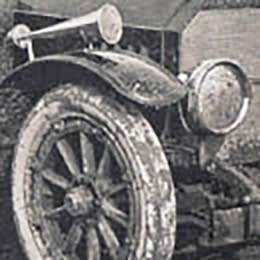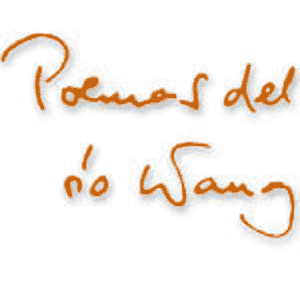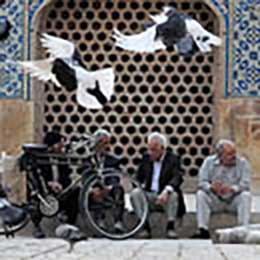 Map of the Albufera of Alcúdia in 1851, as it was before the civilizing intervention of J. F. Bateman and the Majorca Land Company
Map of the Albufera of Alcúdia in 1851, as it was before the civilizing intervention of J. F. Bateman and the Majorca Land Company The main channel of the Albufera opened by J. F. Bateman and the Majorca Land Company
The main channel of the Albufera opened by J. F. Bateman and the Majorca Land Company to lead out to the sea the water of the streams flowing into the lagoon
 Tourist map of Mallorca. The Albufera is marked with green under the flag of the island. Tourist map of Mallorca. The Albufera is marked with green under the flag of the island. |

On land, even if a swampy land, every inch is measured and has its owner, and the animals of these waters, including the eel, are a forbidden prey to the fishermen whose territory is the open sea. And the peasants, who in the autumn hunt here with long-handled reds, filats the thrushes passing from north to south through the island (video), in January “harvest” (this is the term they use; cf. video) the eels swarming in the lagoons. The albufera is the land of the farmer, not of the fisherman. And the animals of the albufera, the heavy buffalos splashing in the lagoon, the large number of birds – coots, mallards, mergansers, moorhens, stilts, sandpipers, swamphens, herons… – which come and go, as well as the eels and other fishes living in the lagoons are considered to belong to the farmer just as the rice grown by him in the shallow margin of the albufera, the marjal.

The rich but unhealthy territory of the albufera was more or less a common treasure of the local villages until “the English” arrived at mid-19th century. Around the same time the Revista de Obras Públicas characterized the Albufera as “an extensive and gloomy reed land, in whose mist there hovers he dreadful image of death.” At that time the albufera was twice as large as now. The famous engineer John Frederick Latrobe Bateman, “the greatest dam-builder of his generation” won the concession to exploit the natural resources of the zone in exchange for executing his ambitious project of drying and sanitation of the marshland. From this moment on the lagoon began to be domesticated, but it never paid the huge investment, especially because a large part of the cultivated land became salty and infertile. Even so, only twenty years ago on a good night they could still catch – harvest – over two tons of eels.

Today you cannot find any more “rates de marjal”, those “swamp rats” which lived only on rice, and from which in Sa Pobla the fabulous “rat with onion” was made. However, they are still hunted in the albufera of Valencia, where they are prepared as arròs amb rates de marjal (paela with swamp rats) or an espardenyà “worthy of a prince” according to Vicente Blasco Ibáñez in his Cañas y barro (1902).
 The chimney of the power plant of Es Murterar among the reeds, at the edge of the lagoon. The heat generated by it has been used for years by a fish drying plant established next to it.
The chimney of the power plant of Es Murterar among the reeds, at the edge of the lagoon. The heat generated by it has been used for years by a fish drying plant established next to it.The former traditional agriculture and wildlife in Mallorca has been systematically destroyed for several decades by the urbanization and tourism forced beyond all limits. The typical raw materials of the kitchen of the island in transformation are nowadays import vegetables, hormone-treated meat, frozen Japanese eel and any other tempting fruit of the tree of progress.

The Mallorquine workers participating in the pharaonic drainage enterprise of the Majorca Land Company, often complained about the conditions imposed on them. When winter arrived with heavy raining, they started to sing this hardly inspiring work song:
Ja comença a fer gotetes i es torrent que ja se'n ve: Mal s'endugués s'Enginyer, es taulons i ses casetes! | The first drops of rain have arrived, the stream started to grow: May the devil take the engineer, the boards and the barracks! |

Leaving the Albufera towards Artá, and passing by Son Real, we cross the estate Son Serra de Marina with its once solemn, now semi-abandoned buildings. But that is another story and another devastation.


























































































Add comment